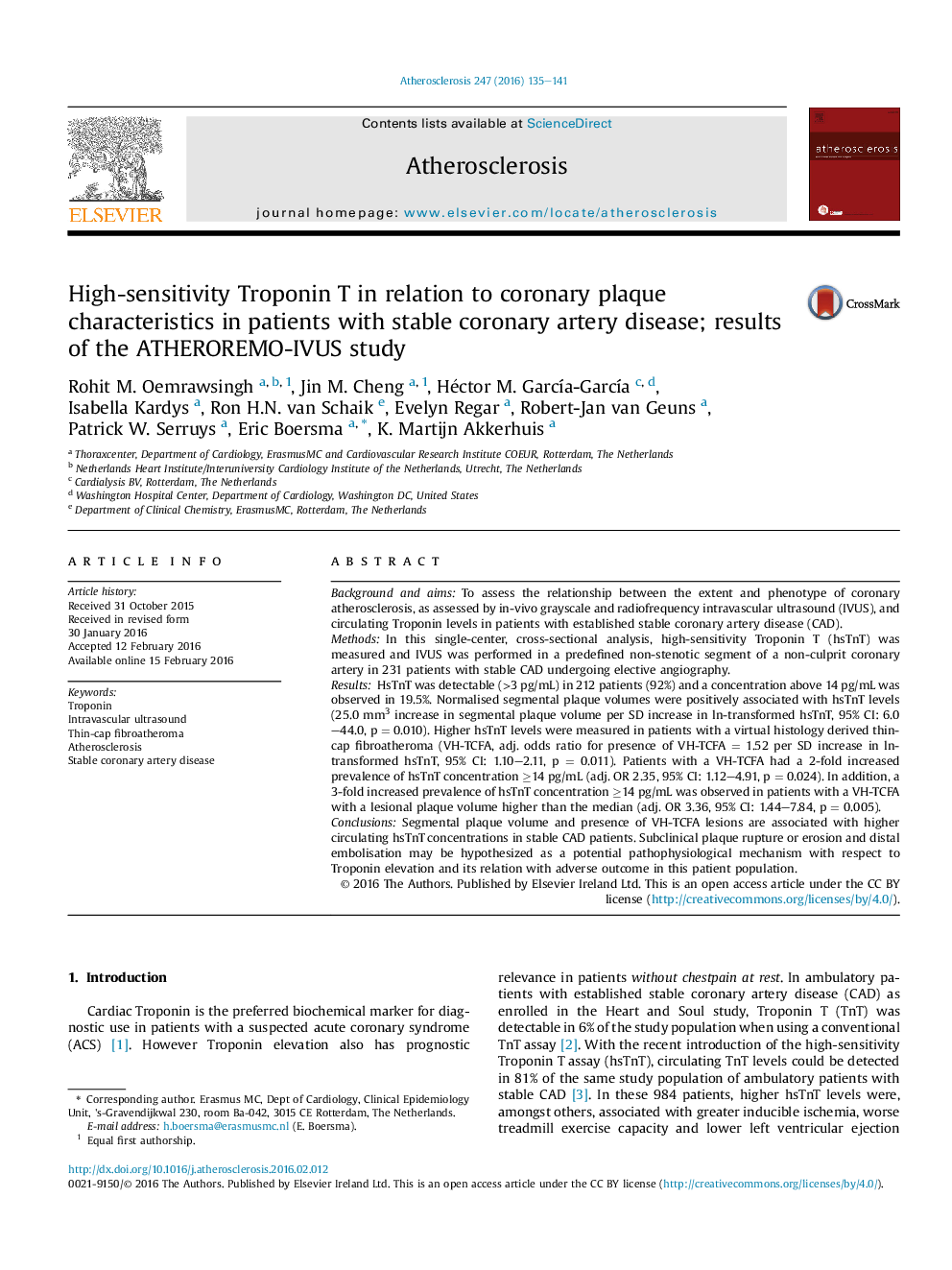| Article ID | Journal | Published Year | Pages | File Type |
|---|---|---|---|---|
| 5943358 | Atherosclerosis | 2016 | 7 Pages |
â¢Serum Troponin is an independent predictor of adverse outcome in stable CAD.â¢We evaluated coronary plaque size and morphology in relation to Troponin levels.â¢IVUS derived plaque volume is positively associated with Troponin levels.â¢Higher Troponin levels were observed in patients with VH-thin cap fibroatheroma.
Background and aimsTo assess the relationship between the extent and phenotype of coronary atherosclerosis, as assessed by in-vivo grayscale and radiofrequency intravascular ultrasound (IVUS), and circulating Troponin levels in patients with established stable coronary artery disease (CAD).MethodsIn this single-center, cross-sectional analysis, high-sensitivity Troponin T (hsTnT) was measured and IVUS was performed in a predefined non-stenotic segment of a non-culprit coronary artery in 231 patients with stable CAD undergoing elective angiography.ResultsHsTnT was detectable (>3 pg/mL) in 212 patients (92%) and a concentration above 14 pg/mL was observed in 19.5%. Normalised segmental plaque volumes were positively associated with hsTnT levels (25.0 mm3 increase in segmental plaque volume per SD increase in ln-transformed hsTnT, 95% CI: 6.0-44.0, p = 0.010). Higher hsTnT levels were measured in patients with a virtual histology derived thin-cap fibroatheroma (VH-TCFA, adj. odds ratio for presence of VH-TCFA = 1.52 per SD increase in ln-transformed hsTnT, 95% CI: 1.10-2.11, p = 0.011). Patients with a VH-TCFA had a 2-fold increased prevalence of hsTnT concentration â¥14 pg/mL (adj. OR 2.35, 95% CI: 1.12-4.91, p = 0.024). In addition, a 3-fold increased prevalence of hsTnT concentration â¥14 pg/mL was observed in patients with a VH-TCFA with a lesional plaque volume higher than the median (adj. OR 3.36, 95% CI: 1.44-7.84, p = 0.005).ConclusionsSegmental plaque volume and presence of VH-TCFA lesions are associated with higher circulating hsTnT concentrations in stable CAD patients. Subclinical plaque rupture or erosion and distal embolisation may be hypothesized as a potential pathophysiological mechanism with respect to Troponin elevation and its relation with adverse outcome in this patient population.
